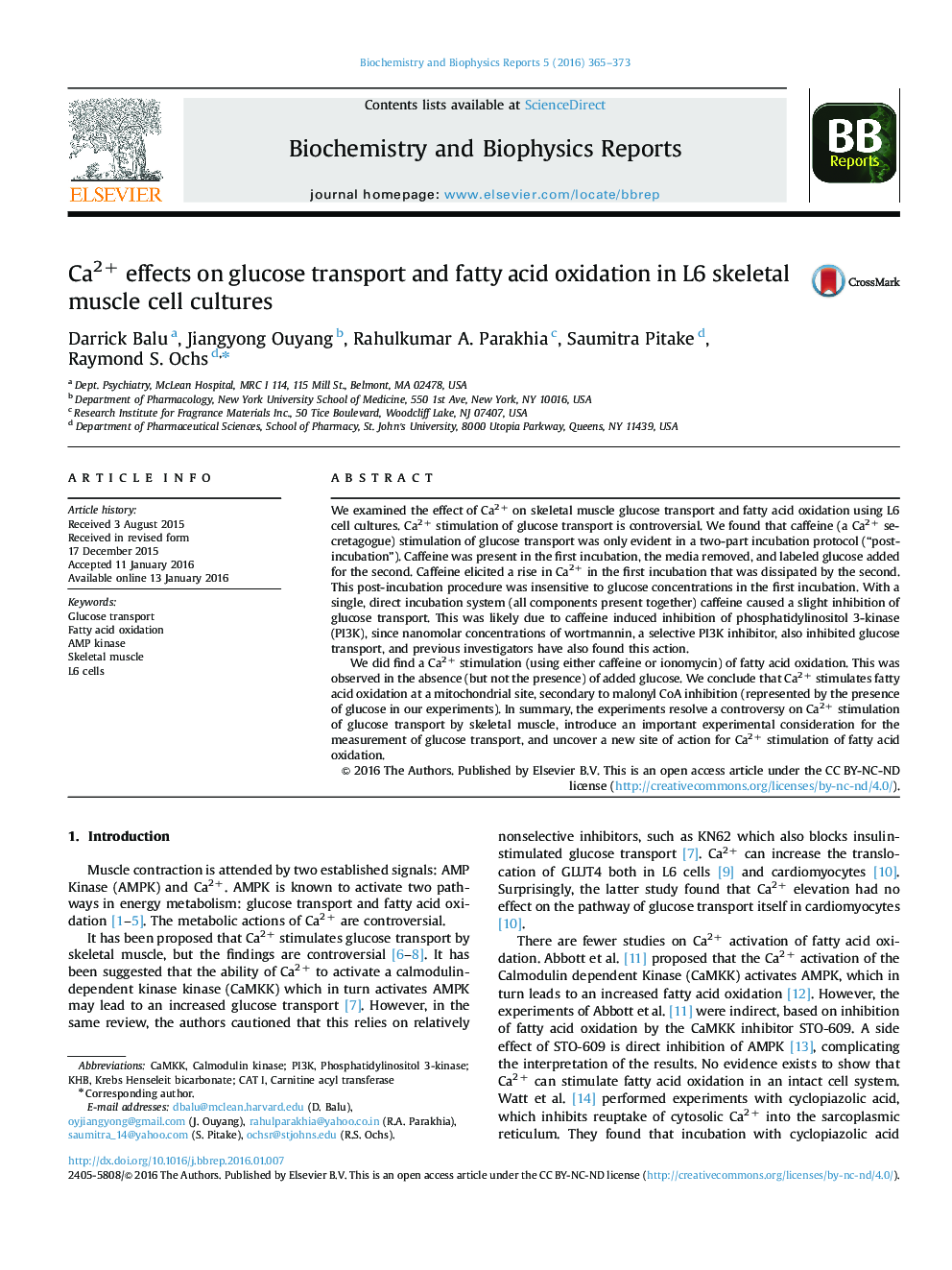| کد مقاله | کد نشریه | سال انتشار | مقاله انگلیسی | نسخه تمام متن |
|---|---|---|---|---|
| 1941742 | 1536903 | 2016 | 9 صفحه PDF | دانلود رایگان |

• Calcium stimulates muscle palmitate oxidation but not glucose transport.
• Previous studies indicating calcium stimulation of glucose transport required to separate incubation (“post-incubation”).
• Glucose transport in the post-incubation protocols are independent of glucose as a substrate and show stimulation by caffeine independent of calcium concentration.
• Calcium stimulation of palmitate oxidation is suppressed by glucose.
• Glucose uncompetitively suppresses fatty acid oxidation.
We examined the effect of Ca2+ on skeletal muscle glucose transport and fatty acid oxidation using L6 cell cultures. Ca2+ stimulation of glucose transport is controversial. We found that caffeine (a Ca2+ secretagogue) stimulation of glucose transport was only evident in a two-part incubation protocol (“post-incubation”). Caffeine was present in the first incubation, the media removed, and labeled glucose added for the second. Caffeine elicited a rise in Ca2+ in the first incubation that was dissipated by the second. This post-incubation procedure was insensitive to glucose concentrations in the first incubation. With a single, direct incubation system (all components present together) caffeine caused a slight inhibition of glucose transport. This was likely due to caffeine induced inhibition of phosphatidylinositol 3-kinase (PI3K), since nanomolar concentrations of wortmannin, a selective PI3K inhibitor, also inhibited glucose transport, and previous investigators have also found this action.We did find a Ca2+ stimulation (using either caffeine or ionomycin) of fatty acid oxidation. This was observed in the absence (but not the presence) of added glucose. We conclude that Ca2+ stimulates fatty acid oxidation at a mitochondrial site, secondary to malonyl CoA inhibition (represented by the presence of glucose in our experiments). In summary, the experiments resolve a controversy on Ca2+ stimulation of glucose transport by skeletal muscle, introduce an important experimental consideration for the measurement of glucose transport, and uncover a new site of action for Ca2+ stimulation of fatty acid oxidation.
Journal: Biochemistry and Biophysics Reports - Volume 5, March 2016, Pages 365–373